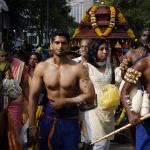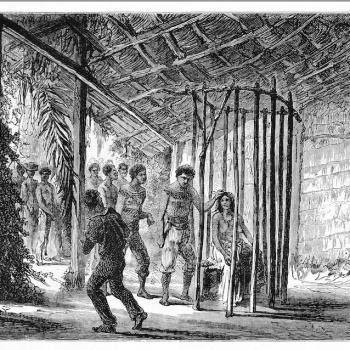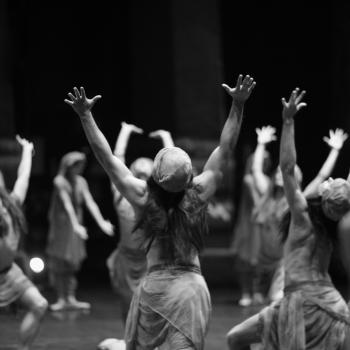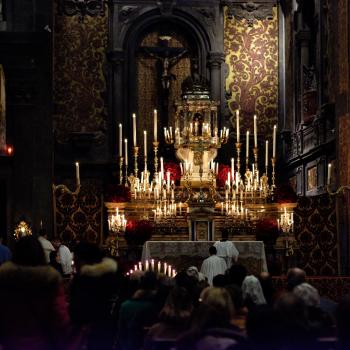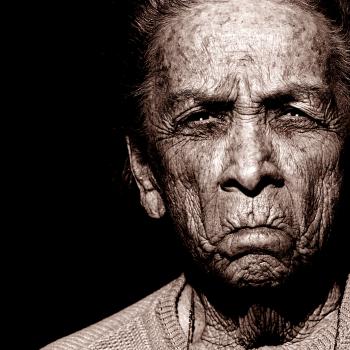Back in the spring, the Center for Mind and Culture and I hosted a colloquium for top leaders in the cognitive and evolutionary sciences of religion. It just so happened that Andrew Henry, the proprietor of the popular YouTube channel Religion for Breakfast, was able to join us and filmed in-depth interviews with each of the top-flight participants. Two of those interviews are now live, and I thought I’d put up a quick post to show them around. Both Andrew and I are at the annual meeting for the American Academy of Religion this weekend in beautiful downtown San Diego (where the weather is a darn sight nicer than Boston). If you’re around, Andrew will be speaking at a panel on Monday about religion in media and the public sphere – a topic he’s eminently qualified to talk about. Meanwhile, here are two fascinating videos, one on religion and war and the other on super-painful rituals.
The first video, with human evolutionary biologist Joseph Henrich, discusses the odd relationship between religion and war. Popular religion critics such as Christopher Hitchens have made a veritable cottage industry of arguing that religion causes war, but this interview flips that association on its head. Here, Andrew and Joe Henrich discuss how war – like natural disasters and other catastrophic events – in fact leads people to become more religious:
The second video, out just last month, is about the infamous Kavadi ritual of Mauritian Hinduism. In this grisly rite, participants bear heavy burdens, walk on sharp objects, and pierce themselves with skewers, hooks, and other sharp, unpleasant-looking objects in order to show their devotion to Murugan, the god of war. Andrew interviews experimental anthropologist Dimitris Xygalatas about the social and individual effects of these dire ritual practices – many of which seem to be unexpectedly positive. For example, people who partake in the Kavadi rite show more prosocial generosity afterwards. What’s perhaps more fascinating is that all this pain, blood, and discomfort actually seem to make people happier and, in some cases, healthier. But that’s worthy of a whole separate post, and right now, I have a conference to get to. Or possibly a mountain outside of town to hike. Don’t tell anyone. Instead, enjoy this fascinating interview on one of the world’s weirdest, and most human, annual celebrations.


